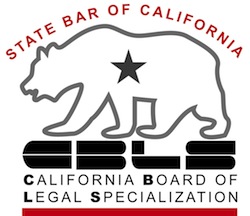Underwater liens that linger after an earlier bankruptcy don’t count in Chapter 13.
At least, they don’t count against the unsecured debt limit that restricts entry into Chapter 13, says the 9th Circuit Bankruptcy Appellate Panel in Free.
Great news for homeowners for whom Chapter 13 was not initially available because they exceeded the debt limits.
Free settles the question of whether the lien that passed through a prior bankruptcy case is a “debt” counted for eligibility purposes in a subsequent Chapter 13 if there is no collateral value to secure it. The answer is no.
Neither the Code nor case law compels inclusion of the discharged in personam liability in such calculation.
What survives a bankruptcy discharge
Without getting so technical that only a lawyer would care, the problem when a Chapter 13 case is filed after a Chapter 7 is characterizing what’s left of the liens in effect when the 7 was filed.
The Chapter 7 discharge eliminated any personal liability of the debtor for the debt that was secured by a lien, but left the lien as a valid charge on any collateral to which it had attached.
Chapter 13 eligibility is limited to a certain amount of secured debt and a certain amount of unsecured debt. But a debt is secured only if the debtor owns property with value that is available to that lien creditor.
So, does a lien for which there is no value in the collateral and no personal liability of the debtor have to be counted when figuring the debtor’s eligibility for 13?
The answer is critical because voluntary liens like mortgages can be voided only in Chapter 13. (That’s a slight overstatement, but it is accurate as to most homeowners.)
Underwater liens don’t count
The debtors in Free had two liens on their home junior to their first. They filed Chapter 7, got a discharge, then filed Chapter 13 so they could strip off of their home the two junior liens.
Those liens weren’t secured claims, because the first mortgage itself was larger than the value of the home. Were those liens then unsecured claims, having passed through the earlier bankruptcy case?
If the two junior liens were “claims” for purposes of the bankruptcy code, their size would disqualify the Frees from Chapter 13.
The BAP distinguished prior case law and found that there was no liability of the Frees on account of these liens and therefore, the unpaid balances on those liens didn’t count.
Encouraging for me was the court’s deference to the Congressional goal of encouraging filing of Chapter 13.
We do not see how the purposes of a chapter 13 reorganization are met by counting the discharged unsecured obligations of the chapter 20 debtor in the eligibility calculation.
Analytically, I’ve argued this point unsuccessfully a couple of times before bankruptcy courts in the Northern District of California. It’s really nice to have the issue settled as I had argued it should be.
Chapter 13 in the bigger picture
The Chapter 13 debt limits have been a bottleneck for too many homeowners in Silicon Valley. The unfettered lending that preceded the Great Recession left many with mortgage debt that is still greater than the value of their homes.
This decision, coupled with the 9th Circuit’s recent decision in Blendheim that determined that liens could be stripped in a Chapter 13 even when the debtor wasn’t eligible for a discharge, enables a larger slice of homeowners here to conform the lien situation to today’s real estate values.
In a rising real estate market, it affirms the utility of “Chapter 20”, a strategy of filing Chapter 7 to eliminate personal liability for as much debt as possible, then filing a Chapter 13 to strip liens and pay obligations that survived the Chapter 7.
Because, there is another unsettled question afoot about real estate appreciation during a Chapter 13. Is that appreciation at risk of being appropriated to pay creditors based on the change in values after the 13 is filed?
By eliminating as many creditor claims as possible in the Chapter 7, a Chapter 20 debtor reduces the universe of creditors who have skin in this game.
Yay, Chapter 20.
Image courtesy of Anssi Koskinen and Flickr






